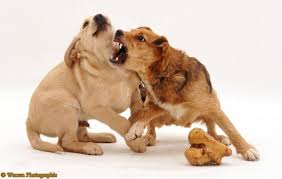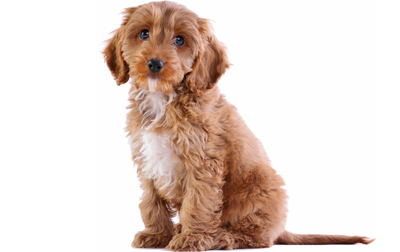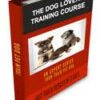Do you own more than one dog? Do they constantly fight over food, but get along in other areas well? Food aggression in dogs is one of 4 main types of aggression when dealing with a four-legged friend.
The other three types are aggression towards children, aggression towards strangers, and aggression towards other dogs. Although all breeds are different and dogs come from various backgrounds, I’m going to give you some general tips to help you successfully deal with food aggression in dogs.
Pinpoint the Problem
First, you need to observe your dogs closely. Do they normally get along with each other, or do they fight all the time? If they fight all the time, it means that one is trying to establish dominance over the other. I’ll deal with that issue in another article. This particular article specifically focuses on food aggression in dogs and how eliminate the behavior.
Consider the Dogs’ Background
 Food aggression in dogs comes from fear that the dog is going to lose what it has (food) or not get what it wants. Take my two dogs for example:
Food aggression in dogs comes from fear that the dog is going to lose what it has (food) or not get what it wants. Take my two dogs for example:
I have 2 Jack Russells. I got one when he was about 3-4 months old. I put him in cageless doggy day care immediately so he could get socialized. 2 years later, I got Jill, another Jack Russell, from a “breeder.”
Jack was very warm and friendly with people and very sharing in nature. Jill would growl when I’d go near her bowl of food. She was extremely territorial when it came to food, and she also took Jack’s food away. She also insisted that she eat first.
Jill had been abused…
I realized that Jill had obviously been abused. She was the “runt of the litter.” Her food aggression was steeped in her roots of having to fight for hers.
I had to teach Jill that her food was safe, her space was safe, there was enough to go around, and that when anyone came near her bowl of food, they weren’t going to take her food away from her. I also had to teach her that it was okay for me to take her food away so she wouldn’t growl or bite me.
So what did I do? I followed these guidelines, and now Jill shares her food with Jack and doesn’t growl when I come to take her bowl of food from her. Here’s what to do to end food aggression in dogs.
Never Punish Your Dog
First, you’ve got to train your dog to think differently about food. Set up a feeding schedule. Second, stop letting his food bowl sit out all day filled up so he can eat whenever he pleases.
Dogs become territorial when they think the source of food is unlimited. They start staking claims because they think the food is just part of the landscape. I kid you not.
Third, feed both dogs only twice to three times daily at the same time each day with equal amounts of food. Why? When you become the source of the food, the dogs look to you for the food rather than protect what they feel is already theirs.
Next, feed your dog in a different room to remove the sense of ownership of that location. Lastly, always make sure you feed dogs separately.
Positive Reinforcement
Here’s another method you can use to stop food aggression in your dogs. Use positive reinforcement.
1. First, put your dog on a leash and stand far away from the source of aggression (the other dog by the food bowl).
2. Give your other dog treats and start praising him.
3. Start walking towards the food bowl (or whatever the source of aggression is) slowly.
As you get closer to the food bowl while the other dog is there, your dog will begin to associate a positive experience and reward, rather than a threat. And that’s how you put an end to food aggression in dogs.




